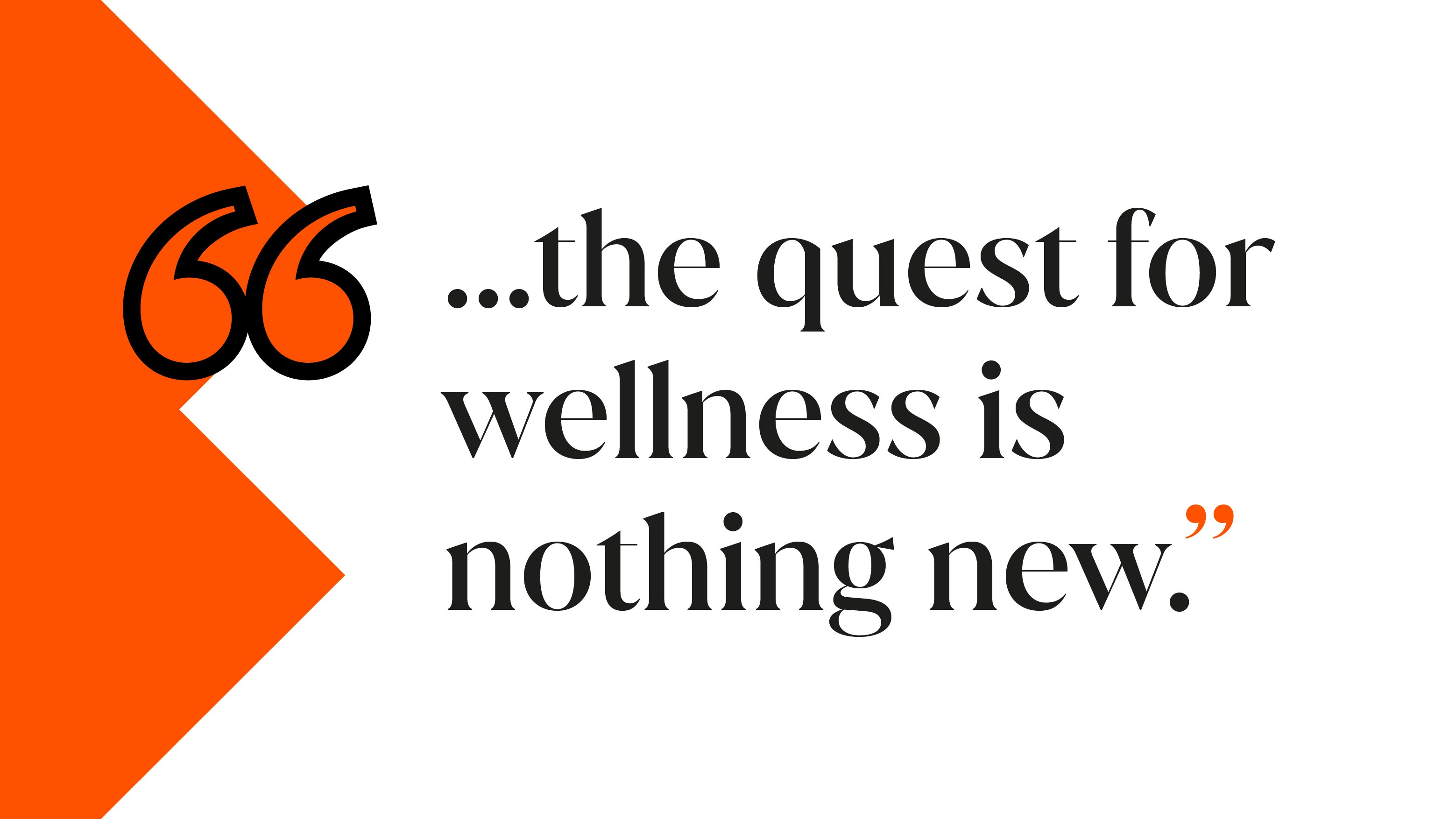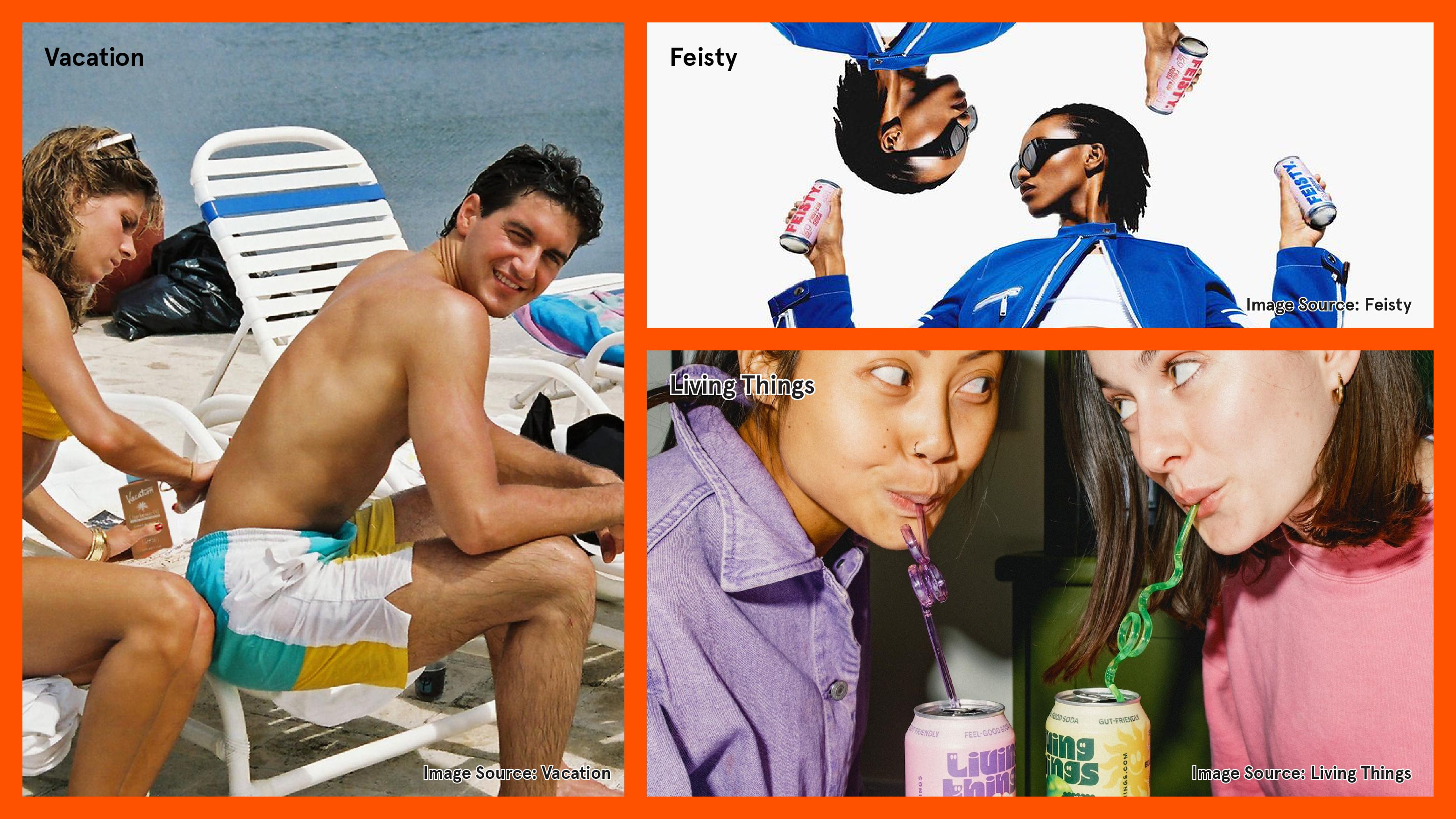Get to The Point of the branding glow up that's taking over the functional wellness space.
The Point

A Well-Worn Seam
Though it may seem a thoroughly modern pursuit, the quest for wellness is nothing new. From ayurvedic practices, to Ancient Egyptians using aloe vera face scrubs, people have always been looking for ways to look and feel better, healthier, smarter, glowy-er. Brands have been involved right from the very start.
None other than John Harvey Kellogg himself (yes, that one) was a vocal advocate on the power of wellness to improve lives. As the global wellness market bloats to behemoth-like proportions (it’s predicted to grow to $8.47 trillion by 2027), the question today for brands that espouse functional benefits is how to stand out amongst the noise.

Function Doesn't Have To Mean Functional
The temptation for marketers of functional brands can be to double-down on the functional proof-points as a focus. Cognitive neuroscience tells us that consumers don’t make decisions like that though. In order to influence at the moment of purchase, functional brands need to meaningfully connect, in a way that sticks in the brain. Particularly in as confusing a category as wellness.
That’s why Vacation, the sun lotion brand, don’t centre their brand on sunshine or their SPF strength, but evoke the nostalgia and atmosphere of summer holidays, even going so far as to launch a smoothie.
It’s why Feisty, a high-protein soda, deliver their brand with a brash, knowing tonality - from the attitudinal naming to a brand world that takes its cues from the fashion world and 90s internet culture. And why Living Things, the prebiotic “gut-loving” soft drink exude vibrant, joyous energy. All are examples of functional brands that have decided what associations they want to be known for (beyond the functional) and bring those through in a way designed to relevantly resonate with their target audience.

Making Wellness Wavy
This approach was key to BrandOpus’s repositioning and redesigning of mio, Kraft-Heinz’s water enhancer brand, when they shifted strategy to become more wellness-focused.
Our work was built on the idea that wellness today simply isn’t one static thing, particularly for mio’s Gen-Z target audience; a generation that’s rejecting idealised standards and craving ways of setting their own agenda. Gym after work? That’s wellness. Reading time? That’s wellness. Having a lie down? That’s wellness too.
We set out to vibrantly reflect that. With a new logo and assets evoking the approachability, simplicity, boldness and fluidity with which Gen Z approach their lives and their wellness, delivered with a personality and tonality that’s at once empowering and empathetic. It’s a brand that promises Wellness on your wavelength, whatever that wavelength may be, and views wellness not through the lens of function, but the role it wants to play in people’s lives.

- https://www.iosrjournals.org/iosr-jhss/papers/Vol.%2022%20Issue8/Version-16/D2208162124.pdf
- https://www.statista.com/statistics/491362/health-wellness-market-value/#:~:text=The%20size%20of%20the%20wellness,trillion%20U.S.%20dollars%20in%202022
- https://www.mckinsey.com/industries/consumer-packaged-goods/our-insights/hungry-and-confused-the-winding-road-to-conscious-eating
- https://baylorlariat.com/2024/02/14/gen-z-is-misunderstood-by-other-generations/
- https://readingrhythms.co/?https://www.readingrhythms.co/?source=google&campaign=misspell&gad_source=1&gclid=CjwKCAiA29auBhBxEiwAnKcSqjeYm9GhQ83YitV9YfRfp9RY1mfN5GqzZ2ukyR96oAurJ6ka5dfnKBoC4yQQAvD_BwE
- https://www.health.com/what-is-bed-rotting-trend-7561395